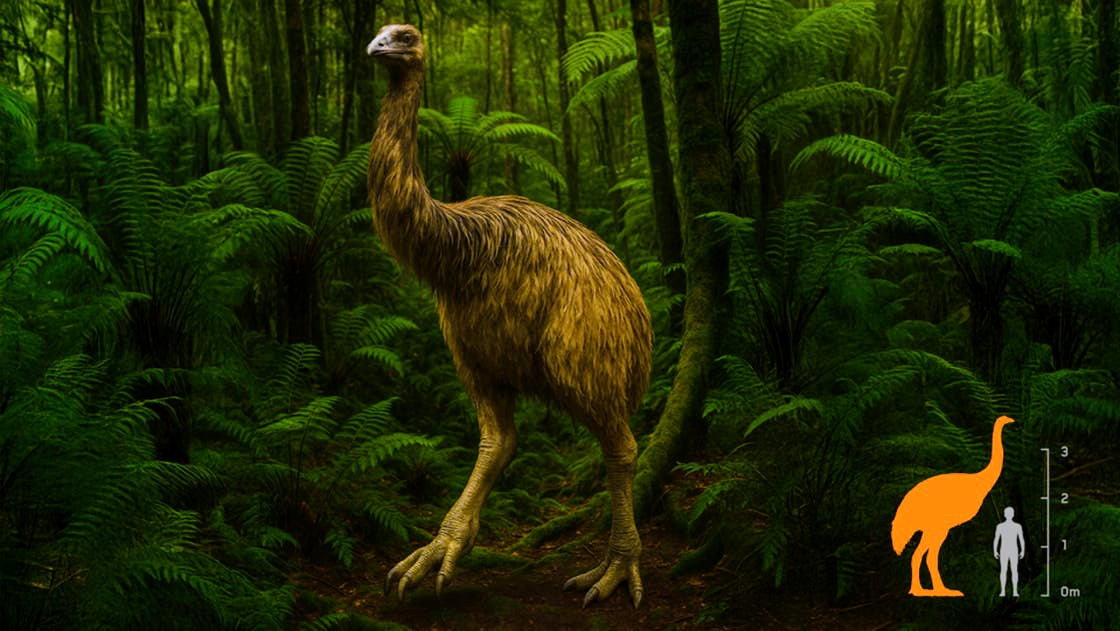In an exciting step reminiscent of science fiction, unprecedented efforts are currently underway to revive the giant "Moa" bird, the largest bird known on Earth, which became extinct about 150 years ago due to overhunting by early Polynesian settlers who arrived in New Zealand in the late thirteenth century.
The Moa bird lived on the South Island of New Zealand, reaching a length of 3.4 meters (11 feet) and weighing about 227 kilograms (500 pounds).
Notably, the males were about half the size of females and were the ones responsible for caring for the young.
This ambitious project combines science, cultural heritage, and technical support;
as New Zealand director and Oscar-winning filmmaker Peter Jackson collaborates with the Texas-based genetic engineering company "Colossal Biosciences".
The company has previously had great success in reviving a rare type of wolf in North America, with support from the famous writer George R. R. Martin, author of the "Game of Thrones" series.
Leading the project in New Zealand is the "Ngai Tahu Research Center" affiliated with the University of Canterbury, working in collaboration with Colossal to collect the genetic material of the giant Moa bird, as well as eight smaller species, some the size of a turkey.
This material will be preserved in biological information banks documenting the rich biological diversity on the island, which is one of the most ecologically diverse regions in the world due to its unique geographical location.
Center director Mike Stevens, a descendant of the early Polynesian settlers from the Ngai Tahu tribe, confirmed that the Moa bird was one of the few protein sources available to the early inhabitants, and they used its bones to craft tools and meet their daily needs.
With its extinction, the Maori people were forced to move to the milder climate of the North Island.
Stevens added that the project comes after three decades of historical reconciliation with the New Zealand government regarding land issues, which shifted the Maori from a position of "victimhood" to "growth and participation", noting that this dream now connects them with people who share the goal, even if their motivations differ slightly.
Peter Jackson also pointed out that New Zealand soldiers used to wear the Moa bird emblem on their military uniforms during World War I, reflecting the deep symbolism of this bird for New Zealanders.
He said: "It is a creature that no living person has seen today, and we have always been haunted by that mysterious question: What did it look like? What was its presence like? I hope this dream becomes a reality soon".
Professor Peter Scofield, one of the leading experts in studying the Moa bird, described it as a "strange creature", noting that scientists have studied its potential environmental impact on New Zealand forests for over 150 years.
He added: "This project is akin to a massive scientific experiment that may teach us more about our ancient environment and extinct animals than we ever dreamed".

